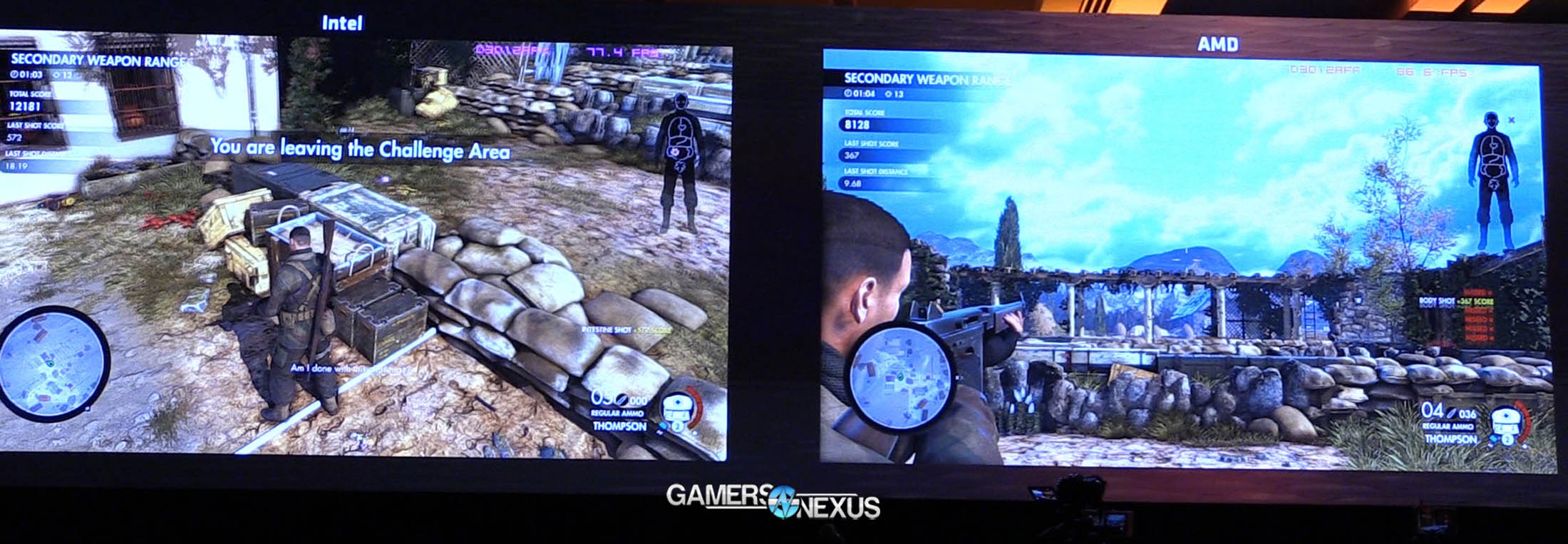Following months of nonstop leaks and speculation, AMD today has officially announced its Ryzen R7 lineup, base specifications, and pricing for 8C/16T products. AMD is expected to follow-up later with lower-end SKU launches – if the leaks are to be believed, that’d be R3 and R5 – leaving today’s focus entirely on the 8C/16T “R7” lineup. The three primary CPU SKUs announced are the R7 1700, R7 1700X, and R7 1800X (in order of price/performance), each of which we hope to test in short order.
To get the immediate question out of the way: The processors will be made available on March 2 (shelf availability) at the following prices:
- AMD Ryzen R7 1700: $330
- AMD Ryzen R7 1700X: $400
- AMD Ryzen R7 1800X: $500
AMD will open pre-orders today for the products, but as always, we always strongly encourage our readers and viewers to wait until we’ve posted review content prior to placing orders. GN never recommends hardware or software pre-orders, and suggests – with new platforms especially – that our audience waits for final analysis before investing in a product.
That stated, let’s get through a few of the core specifications that AMD revealed to GamersNexus at AMD’s San Francisco event this week:
AMD Ryzen R7 1700, R7 1700X, & R7 1800X Official Specs
| Ryzen R7 1700 | Ryzen R7 1700X | Ryzen R7 1800X | |
| Cores/Threads | 8C/16T | 8C/16T | 8C/16T |
| Base / Boost | 3.0GHz / 3.7GHz | 3.4GHz / 3.8GHz | 3.6GHz / 4.0GHz |
| TDP | 65W | 95W | 95W |
| Price | $330 | $400 | $500 |
Note, our video version of this coverage is here, if you prefer.
The R7 1700 should compete most directly with the i7-7700K, both in price and performance, with the R7 1700X and R7 1800X competing with Intel’s X-class 6800K and 6900K i7 CPUs. All R7 products will run 8C/16T core/thread counts, with base frequencies between 3.0GHz and 3.6GHz. Note that XFR will apply here to some extent and expand frequency range, but we’ll talk about the impact of XFR more in our Ryzen reviews.
As for TDP, the R7 1700 is targeted at 65W, the 1700X at 95W, and 1800X at 95W as well. Theoretically, XFR and boost functionality should allow some extra clock headroom under optimal thermal conditions.
AMD’s Benchmarks (Grain of Salt Here)
At its San Francisco Editor’s Day, AMD ran the usual gamut of Cinebench benchmarks and side-by-side performance comparisons with Intel CPUs, just as we saw at CES and the editor’s day before that. We won’t be posting our reviews until launch, it seems, and so we’d advise taking performance metrics obtained by AMD with a grain of salt until we’ve had time to dig into the product.
To use AMD’s numbers produced during the tech day, just to set a precedent for future validation, here’s what AMD boasted for Cinebench R15 nT:
R7 1700X vs. i7-6900K (AMD’s numbers)
- AMD R7 1700X: 1537 cb
- Intel i7-6900K: 1474 cb
R7 1700 vs. i7-7700K (AMD’s numbers)
- AMD R7 1700: 1410 cb
- Intel i7-7700K: 967 cb
AMD’s showing improvement over Intel’s direct competitors in the Cinebench multi-threaded benchmark. We are not sure the precise motherboard or memory configuration (e.g. channeling on X99) for this benchmark, but will validate for our review.
The company also ran somewhat of an ad-hoc Sniper Elite “benchmark” with side-by-side gameplay and framerates between the Intel and AMD CPUs. We’d suggest largely ignoring any numbers printed based upon this demonstration, as the side with the AMD CPU (right) regularly contained large swathes of skybox (during ammo reloads, for example) while the Intel CPU demo happened to focus more on other nearby geometry while eliminating much of the sky. This heavily impacts performance, as we’ve demonstrated in past game benchmarks. It may have been unintentional, but this means that the numbers are also largely pointless other than to demonstrate that the two CPUs are vaguely comparable in general performance. AMD's off-the-cuff claim that they tend to perform a bit better, with the demonstration we saw, is not based on any meaningful methodology and uses numbers that lack the geometric complexity encountered on the Intel (left) side of the screen. This is not to say that AMD couldn't or won't outperform its direct Intel competition in games, but we would suggest that you don’t take any numbers from this benchmark as hard fact as to which CPU is superior. The testing environment was simply below our standards for what constitutes a repeatable benchmark. Wait for our game benchmarks – again, likely to coincide with launch – for hard numbers in a controlled environment.
Architecture detailing will also largely wait until the full review, but we can provide an initial look for now. Some of this information is known thanks to David Kanter’s work at Microprocessor Report (also runs Real World Tech).
AMD’s Zen architecture departs from the 1FPU/2INT unit design of the Bulldozer architecture and shifts back toward a single FPU per core, with private L2 cache and SIMD per core. The FPU remains narrower than its integer counterpart, but doubling up on FPUs and improving architecture elsewhere will assist in performance for FP-intensive tasks – like much of gaming.
AMD’s new micro-op cache is also a major feature and reduces x86 decode overhead, and is one piece of AMD’s major Ryzen cache reworks. This aids in both power efficiency and cycle efficiency. Snooping and probes for core-to-core or core-to-cache communications should now be reduced or streamlined over previous AMD architectures, particularly with the privatization of L2 Cache for each core.
There are more components of AMD's Ryzen Architecture to discuss in our deep-dive for launch day. Be sure to check back to the site, YouTube channel, and Twitter to stay in the loop.
Editorial, Host: Steve Burke
Video: Keegan Gallick

